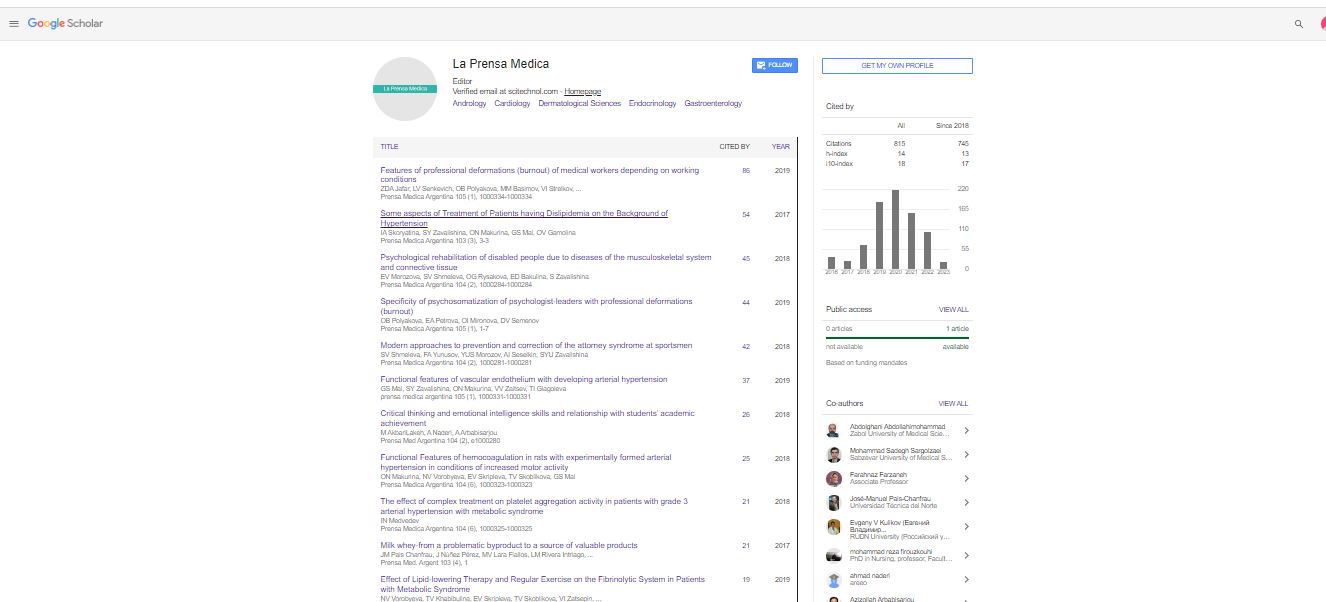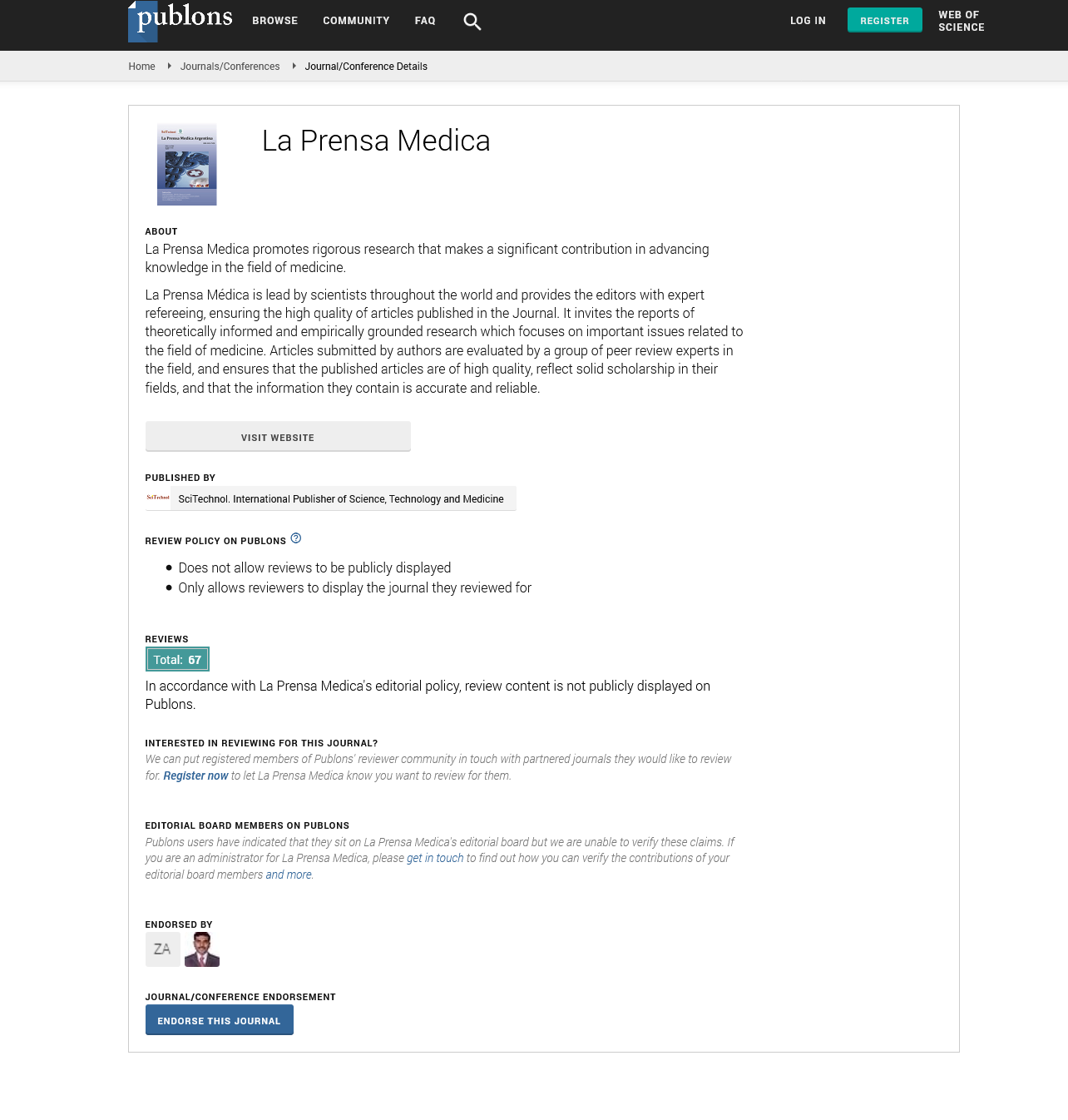Short Communication, Lpm Vol: 107 Issue: 6
Absolute eosinopenia as a early diagnostic marker for enteric fever
Swati Kapoor, Rajeev Upreti, Monica Mahajan, Abhaya Indrayan and Dinesh Srivastava
Max Superspeciality Hospital, New Delhi, India
Abstract
Enteric fever is caused by gram negative bacilli Salmonella typhi and paratyphi. It is associated with high morbidity and mortality worldwide. Timely initiation of treatment is a crucial step for prevention of any complications. Cultures of body fluids are diagnostic, but not always conclusive or practically feasible in most centers. Moreover, the results of cultures delay the treatment initiation. Serological tests lack diagnostic value. The blood counts can offer a promising option in diagnosis. A retrospective study to find out the relevance of leucopenia and eosinopenia was conducted on 203 culture proven enteric fever patients and 159 culture proven non-enteric fever patients in a tertiary care hospital in New Delhi. The patient details were retrieved from the electronic medical records section of the hospital. Absolute eosinopenia was considered as absolute eosinophil count (AEC) of less than 40 / mm3 (normal level: 40-400/mm3) using LH-750 Beckman Coulter Automated machine. Leucopoenia was defined as total leucocyte count (TLC) of less than 4x109 /l. Blood cultures were done using BacT/ ALERT FA plus automated blood culture system before first antibiotic dose was given. Case and control groups were compared using Pearson Chi square test. I
Keywords: La Prensa Medica
Introduction
An estimated 11.9 to 20.6 million new infections and >200,000 deaths occur annually worldwide, with the highest incidence rates in South Asia, particularly among children were observed. Prevention measures including vaccination, early diagnosis, and appropriate treatment are required to manage enteric fever. However, the low isolation rate of the bacteria from blood cultures, at 40–70% is a concerning issue, particularly in patients with prior antibiotic use. Furthermore, the lack of characteristic clinical findings and user-friendly and accurate diagnostic tools have made diagnosis of enteric fever difficult. Rosespots are comparatively characteristic of enteric fever, whereas they are rarely seen in returned travellers; rose spots reportedly occur in only 4% of patients because they generally develop 1 to 2 weeks after disease onset. The diagnostic usefulness of the Widal test and rapid diagnostic tests are limited due to their inaccuracy and polymerase chain reaction (PCR) methodology is not commercially available in Japan. In the era that relied on physical examination, William Osler focused on patterns of pulse and fever to differentiate typhoid fever from malaria and typhus however, recently, the classic signs of relative bradycardia and eosinopenia have not been considered specific diagnostic markers for enteric fever because they can also be present in other infections. Now that we are currently 100 years past the William Osler era, the purpose of this study was to evaluate the diagnostic usefulness of relative bradycardia and eosinopenia for predicting enteric fever among travellers returning to non-endemic areas (i.e., returned travellers).
Statistical analyses
Characteristics were compared among cases and controls using chisquare (χ2) or Fisher exact tests for nominal variables and MannWhitney U tests for continuous variables. Conditional logistic regression analysis was performed to evaluate the correlations of variables with enteric fever, based on odds ratios (ORs) and 95% confidence intervals (CIs). Multivariate logistic regression analysis was used to find the independent predictors for enteric fever diagnosis. The model was not adjusted for any variables because groups were matched for age and sex, and there were no other aforementioned potential confounders to consider in the models.
Main analyses
Cases predominantly returned from South Asia (70% of cases versus 18% of controls, p 1, and each negative LR in <1. The proportion of relative bradycardia and absolute eosinopenia differed according to the diseases among controls.Logistic regression analysis revealed a significant association between a diagnosis of enteric fever and each predictor, including a return from South Asia relative and absolute eosinopenia. Return from South Asia relative bradycardia and haematocrit remained independent predictors for enteric fever diagnosis even in multivariate logistic regression analysis. Furthermore, NPVs of each variable. Notably, the NPVs of relative bradycardia and eosinopenia were 92.2% and 92.6%, respectively. However, the specificities (20.8–82.5%) and PPVs (28.6–57.1%) varied and were not high. The highest positive LR was 4.00 (95% CI: 2.58–6.20) for return from South Asia, followed by 1.72 (95% CI: 1.39–2.13) for relative bradycardia, 1.63 (95% CI: 1.17–2.27) for absolute eosinopenia, and 1.2 (95% CI: 1.07–1.35) for eosinopenia. The negative LRs were 0.36 (95% CI: 0.22–0.59) for return from South Asia, 0.25 (95% CI: 0.11–0.59) for relative bradycardia, 0.61 (95% CI: 0.40–0.93) for absolute eosinopenia, and 0.24 (95% CI: 0.06–0.97) for eosinopenia. Importantly, all of these variables met the criteria for being diagnostic predictors for enteric fever based on the positive and negative LRs; namely, each positive LR resulted in >1, and each negative LR in <1. The proportion of relative bradycardia and absolute eosinopenia differed according to the diseases among controls.
 Spanish
Spanish  Chinese
Chinese  Russian
Russian  German
German  French
French  Japanese
Japanese  Portuguese
Portuguese  Hindi
Hindi 

